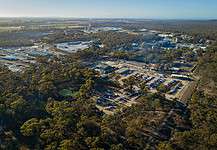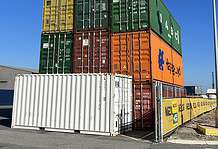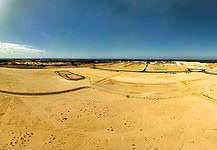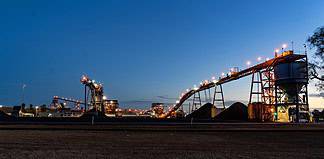Ore cart being loaded into recommissioned mine shaft at Morning Star. Image: AuStar Gold
BY GERARD MCARTNEY
THE recommissioning of two sleeping giants in Victoria’s Eastern goldfields is creating a hive of activity as AuStar Gold restarts production at the Rose of Denmark and Morning Star mines.
AUSTAR Gold has breathed new life into the Morning Star and Rose of Denmark mines.
The production of gold at the mines is the crown jewel in a series of achievements since 2015 for AuStar Gold.
“There has been a number of milestones in the last two years, firstly recommissioning the Morning Star winder and shaft, then recommissioning the processing plant and demonstrating its capability to recover gold effectively,” AusStar chief executive Tom de Vries told the Australian Mining Review,
“We have recently undertaken a significant amount of diamond drilling with repeated visible gold hits at both Morning Star and Rose of Denmark mines which is satisfying.”
Mantle Mining took over the Morning Star mine and its associated tenements in August 2015, after it acquired Morning Star Gold.
Reflecting the company’s status as an emerging gold producer, Mantle Mining changed its name to AuStar Gold in 2017.
In 2018, AuStar Gold moved through the exploration, development, mining and processing initiatives at both the Morning Star and Rose of Denmark mines, where it was able to produce the first gold pour at the Morning Star mine in May 2018, and the first pour at the Rose of Denmark in August 2018.
“The maiden pour for Morning Star was exciting as it really proved the worth of the gravity processing plant at Woods Point,” Mr de Vries said.
“By the time we poured gold from Rose of Denmark it was more of the same, but still very satisfying.”
In June 2018, Austar Gold completed its 100 per cent acquisition of the Rose of Denmark mine after the joint venture licence with Shandong Tiane Real Estate Development Group stagnated.
Recommissioning the two mines required considerable work, such as a plant upgrade at Morning Star that included supporting infrastructure with a high-speed winder, surface and underground power supplies, site offices and accommodation quarters to service both mines.
“The biggest challenge we had was to recover the gold from sulphide concentrate that was left over from the tabling of the dore and from a by-product called middlings, which does not make it to the gold room,” Mr de Vries said.
Rose of Denmark
Exploration for new sources at the Rose of Denmark mine used both percussion and diamond core drilling.
The company sampled 477 assays from the percussion drilling and, in said the samples appeared to reinforce the theory that the trends of grade follow identified quartz ladder veins.
In a statement on 8 January, the company said that its diamond drilling program had continued to find high-grade gold intercepts, and that further drilling was required to define the dyke orientation and width, to then be able to drill the line of the dyke.
Diamond drilling was further used to allow for the up and down dip surfaces of the dyke to be appropriately defined, and a second phase was directed within the dyke to further clarify gold trends.
There was also further drilling at the northern dyke bulge that built on previous drill holes from 2017.
“The diamond drilling above and below the level of the Rose of Denmark adit is defining the shape and geometry of the dyke and is nearing completion,” Mr de Vries said.
“We have completed 16 holes in this current phase of drilling with ongoing encouraging results.
“Since December 2017, we have drilled over 40 holes and our knowledge of the ore body continues to grow.
“Rose of Denmark diamond drilling has continued to be exciting, with numerous visible gold hits. Our geologists are expressing confidence that in a month or two they will be able to direct us to a sustainable ore source in that mine.”
Stone’s and McNally’s Reefs
As the main source of plant feed for the Morning Star mine, AuStar has been exploring the nearby Stone’s and McNally’s Reefs prospects, where it has drilled 781.7 metres and assayed 594 samples.
In December 2018, the company confirmed that the closely spaced drill holes at McNally’s Reef identified high-grade quartz-sulphide, and drilling at Stone’s Reef had indicated that there is a high-grade mineralised quartz immediately below the surrounding sediments.
AuStar’s development plan would initially focus on exposing the reef at McNally’s for plant feed, where it will continue to develop along the structure, targeting the highest grade drill holes.
A similar approach to selective mining would also be taken to Stone’s Reef.
“Diamond drilling has been budgeted to continue uninterrupted for the next six months. McNally’s continues to excite us and needs more drilling to the south, but we also intend to drill South Whitelaw at a historic hole that was declared at 0.55m 76 g/t, there is also Cherries/Morgan’s in the upper mine that has attracted our attention and we intend to come back to Stacpoole North in the next six months,” Mr de Vries said.
Outlook
Mr de Vries believed the biggest challenge for the company was always to ensure there was enough high-grade ore to access and mine.
“We feel confident that we are over that challenge and the next hurdle is to now profitably mine at both Morning Star and Rose of Denmark,” he said.
“To that end we are developing access to the ore bodies now.”
Looking forward, the company had a few goals that build on its previous successes.
“The first is a short term aim to clearly demonstrate that we can successfully explore, mine and process at both Morning Star and Rose of Denmark profitably and sustainably,” he said.
“The second is to build our drilled stock to provide continuous supply of ore to the mill, build cash flow and still continue in mine exploration.
“The third is to continue exploration on our highly prospective exploration lease area.”
























































